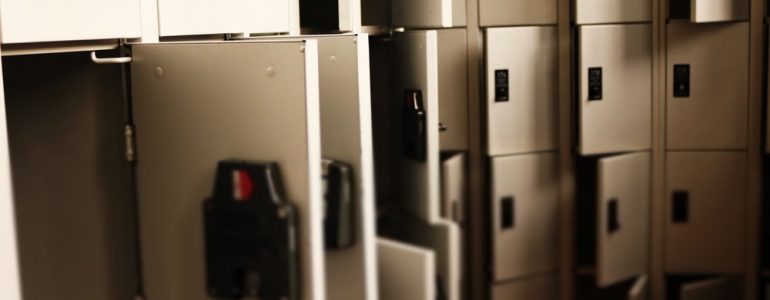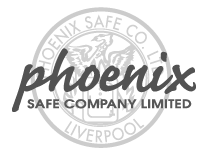There’s a saying that goes something like – Put your clothes in the closet, food in the fridge, and money in the bank. But where exactly do you put your precious valuables, rare coins, jewellery and other important documents?
Now, most people believe that a bank safe deposit box is the safest place on earth to store valuables. After all, you get 24 hour, high-end security and a virtually burglar-proof setting. On the other hand, an even bigger group of homeowners prefer home safes thanks to the significantly larger storage space and convenient, 24/7 access.
But no matter where your school of thought lies, one thing’s for sure – we all have something that we want kept under lock and key. Only difference is, what’s the best way to do it? We’ve compiled a few key considerations to make when deciding between a safe deposit box or a home safe.
Home safe vs safe deposit box
1. Security and protection
When it comes to the safety and protection of your documents and valuables, safe deposit boxes have home safes beat by a mile. In addition to being vaulted and sealed for ultimate security, these miniature safe-like boxes are actually inside a bank.
This means 24-hour security, strict surveillance, burglar detection and expensive alarm systems. And while safety deposit boxes do get robbed, it’s quite the rare occurrence. Similarly, safe deposit boxes offer high-grade protection against fire, floods, and other natural disasters.
Home safes, on the other hand, do offer a wide range of security options such as combination lock and biometric sensors. Similarly, today’s home safes can be concealed in some pretty ingenious ways. But if we’re being honest, they are notoriously easy to crack, break, or haul. All a burglar needs is a metal detector and some power tools.
And still on the topic of security, most home safes tend to have a very low rating for protection against fire and water. You can usually expect anywhere between 30 minutes to an hour for the average home safe. Safe deposit box rooms in banks have their own fire detection and response system in addition to some incredibly resilient strong rooms.
2. Storage space
If we’re talking storage space, then home safes have safe deposit boxes trumped. You can buy a home safe depending on what you intend to put in there. This gives you the option of small safes for trinkets and documents and larger, free-standing wall safes for things like rifles, art, valuable collections and other larger items.
Safe deposit boxes definitely come with size limitations. Most banks have them at 3 by 5 inches to 15-inch boxes. So even with the largest safety deposit box, all you can really put in there is some jewellery, paperwork, and other small items. While some people argue that you can book two large safety deposit boxes, this will only allow you to store a larger quantity of smaller items.
3. Convenience and access
First off, safe deposit boxes are located inside banks. This means that in addition to leaving your home every time you need something from the safe deposit box, you also have to do so within the banks working hours.
That’s why most people only store items that they don’t need regular access to in safe deposit box. Likewise, these boxes come with only one key that you have to be extra careful with since losing it could cost you some hefty replacement charges.
On the flip side, home safes are located right inside your home giving you instant, all day and night access to your valuables and documents. You don’t even need to leave the comfort of your home. Thanks to this natural access, home safes are more suited to valuables and documents that you use regularly.
After all, you can’t really keep making trips to the bank every morning to get your favourite watch now, can you? And if you do lose your home safe key, you most likely have a spare, and it won’t cost you half as much to get it open by a locksmith.
4. Value and cost
This one’s a no-brainer at first glance, but as always, nothing is as it seems. The average home safe ranges anywhere from 500 pounds to a couple thousand pounds to purchase and install in your house.
When you compare this price to safe deposit boxes which typically charge less than 100 pounds a year, it’s easy to see why most people consider safe deposit boxes the more cost-effective option.
However, most people tend to overlook the bigger picture. Over time, keeping your items in safe deposit boxes can get very expensive, especially with rental fees, annual charges, key replacement costs and other expenses.
In just a few short years, the fees paid to the bank could be enough to buy a decent home safe that will serve you for life without any additional costs. And unlike safe deposit boxes, home safes actually have insurance cover for the valuables inside in case of anything.
Conclusion
From our comprehensive comparison above, it’s clear that both options come with their own unique pros and cons. While you get total access and more space to store your items with home safes, it’s pretty tough to match the safety and protection offered by bank safe deposit boxes. And while your bank might be 100% impregnable, you’ll still have to deal with the annual fees and inconvenience of making frequent trips.
In the end, it’s all about working out your priorities and seeing which option suits your needs perfectly. But if you were to ask me, I’d tell anyone without a safe deposit box to get one, and those without a home safe to install one too. Why?
Well, because with both, you can stash away priceless valuables and insanely expensive items that you can’t risk losing in the bank deposit, and use your home safe to safeguard jewellery, valuables, and documents that you need daily or regular access to. That’s what I call having your cake and eating it too.








Nice article Sam Ellis!!! you have mentioned all that point in difference on Home Safe and Safe Deposit Lockers. Very unique and clearly you have mentioned here all point. It is very helpful those people who want to keep their valuable things to safe deposit. And I have also read one more article here http://uksafedeposit.com which is also very helpful.